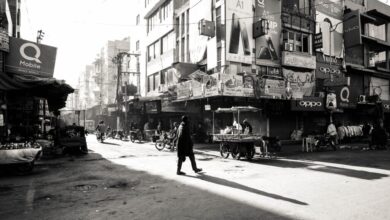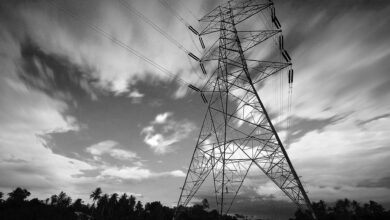While news of the oil inquiry report, gas mismanagement and cement cartels dominated feeds this week, Macro Pakistani felt the need to expand on other burgeoning issues in the country. The state of human development in Pakistan should be a priority focus to ensure future generations live better lives than their predecessors did. Social mobility will remain limited unless already identified issues with education and health are addressed.
Most of the aforementioned issues can be traced back to the limited administrative capacity of successive governments along with lack of civic engagement of its constituents. People of Pakistan need to be more aware of what is happening in the country and this democratization of information needs to trickle down to all strata of society. We hope for actionable interventions to result from the recent investigations but more importantly, we hope people can learn from past mistakes and not to repeat them going forward.
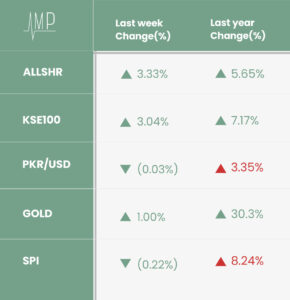
The KSE 100 reached a 2.5-year high this week, off the back of news of increasing exports, remittances and the Large Scale Manufacturing Index. The LSM for October 2020, increased by 6.66% since last year suggesting the economy was on the path to recovery. With easing political fears due to dampening anti-government sentiment, investors remained upbeat on recovering economic conditions. International gold prices continued their weekly gain for a third straight week, as a US fiscal stimulus package nears. The exchange rate also maintained its level around the PKR 160/USD mark.
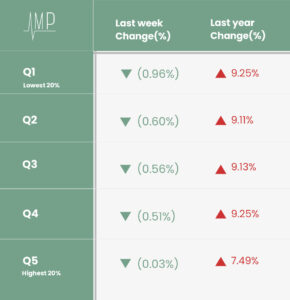
As mentioned last week, we can expect the weekly inflation to continue its downward trajectory as food prices are controlled. This will continue to benefit the lowest 20% of income earners in the country the most, who experienced a drop of 0.96% in Sensitive Prices as compared to the average of 0.22% for the rest of the country. Annual inflation has been brought back around the target of 7-9% mainly due to a fall in prices of Tomatoes (25.81%), Potatoes (18.55%), Onions (8.34%) and Chicken (2.25%). However, on an annual basis, Chicken prices were up almost 62% as compared to last year. We continue to bring improvements to our dedicated page for illustrative data on Pakistan’s economy. Do check it out and let us know if you have any feedback!
What is the economic impact of the Pakistani diaspora?

By Myra Ahmed
With Pakistan reportedly losing 800-1,000 jobs daily for its migrant workers in the UAE due to suspension of visas, the importance of remittances to the country has come back into focus. With trade failed to have picked up significantly, inflows from the Pakistani diaspora continue to be the saving grace for Pakistan and its current account. Myra explores the topic in more detail, accounting for the location of Overseas Pakistanis, their economic impact and potential multiplier effects of their contributions.
Read more
Number of Overseas Pakistanis living, working and studying abroad 2017-18
Over 50% of the ~9 million strong diaspora community lives in the Middle East
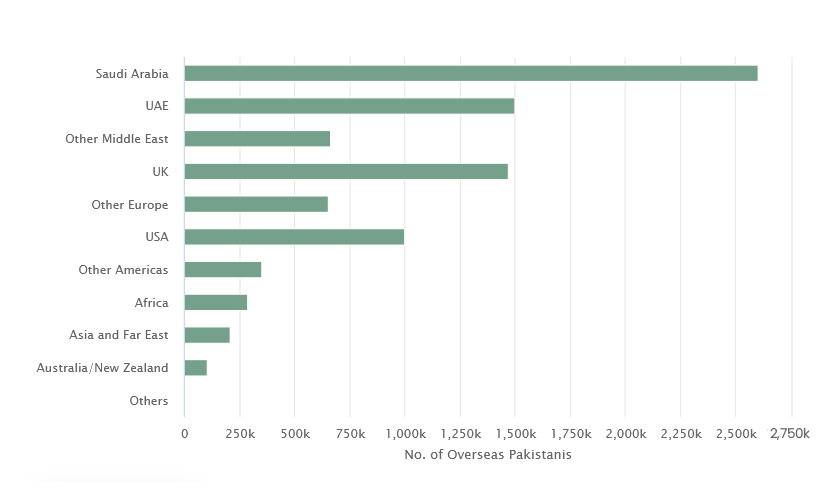
Source: Ministry of Overseas Pakistanis & Human Resource Development
VIEW GRAPH IN ORIGINAL ARTICLE
Relations with the Middle East are key in order to sustain this source of funding to our current account and reduce the impact of consistent deficits. Remittances are also often termed ‘shock-absorbers’, meaning that during times of external shocks, they remain consistent, sometimes even rise to insure families against income shocks. We have witnessed this firsthand during COVID-19, when remittances have remained above USD 2 billion for the past 6 months. Their rise, in part, can be explained by the change in the make-up of the Pakistani diaspora.
Labor Migration by Skill Level 1980-2020 (Cumulative)
Rising share of skilled labor migration abroad can explain rise in remittances
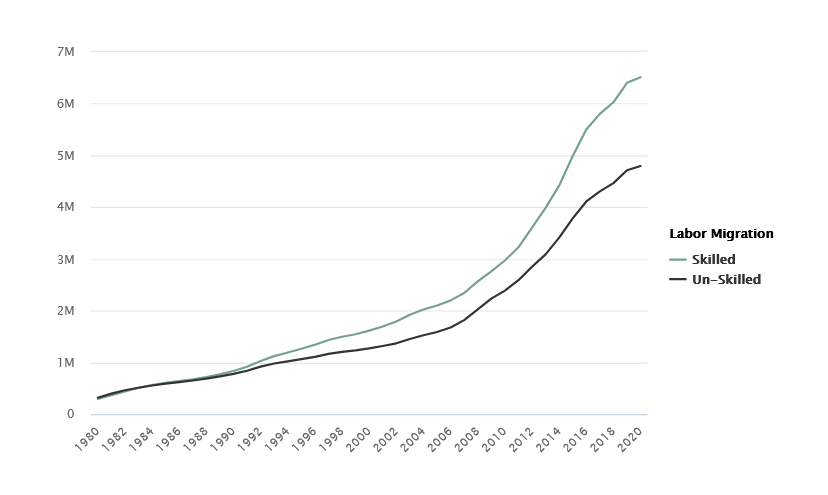
Source: Bureau of Emigration & Overseas Employment
VIEW GRAPH IN ORIGINAL ARTICLE
Read the full article to understand the multiplier effects of remittances on factors such as education in Pakistan and what actions the government is taking to boost the flow of these funds.
What Else We’re Reading (Local)
Examples of the horror show that is the management of Pakistan’s largest industrial sector of oil, with blame spread amongst most stakeholders (Business Recorder)
In a major setback to gas-starved consumers, Pakistan could not even get a single bid for 3 LNG cargoes meant for the first half of January (Dawn)
Findings of the Competition Commission of Pakistan on cartelization of the cement industry will not yield many actionable interventions (Business Recorder)
The poor have been largely excluded from participating in the massive opportunity created by our quickly evolving digisphere but there are early signs of disruptive progress (Profit)
What Else We’re Reading (International)
Lending by China’s biggest policy banks collapsed from a peak of USD 75 billion in 2016 to USD 4 billion last year, as Beijing rethinks the Belt and Road Initiative (Financial Times)
Iranian oil exports rise as Tehran circumvents sanctions and finds new buyers such as China and Venezuela under maximum pressure from the US (Wall Street)



